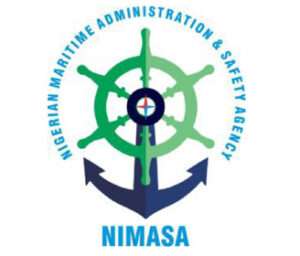It was the then- Nigerian Shipping Companies Association (NSCA) that kick-started the quest for the enactment of the Cabotage Act. At the onset of the lobby to enact the Act, we can recall quite vividly how the ship owners told the law makers that if the almighty United States of America could make a bold statement of indigenising her coastal shipping business through the Jones Act of 1938, why wouldn’t Nigeria.

They premised their positions on the fact that with a coastline of about 870 kilometers and almost 3,000 kilometers and about 22 ½ billion cubic metres of crude oil deposits, 3 ½ trillion cubic metres of hydro carbon and 42.7 billion cubic metres of bitumen deposits, Nigeria should embrace protectionism.
With a lofty objective of deliberately reserving commercial transportation of goods and services within Nigeria’s coastal and inland water space for Nigerian-flag vessels and vessels that are owned by Nigerians, the Cabotage Law of 2003 spelt out four pillars upon which its implementation must rest.
The four pillars are that: Cabotage vessels must be wholly -owned by Nigerians; they must be registered in Nigeria, must be crewed by Nigeria and Nigerian shipyards must build and repair Cabotage vessels.
Between 2004 when the Act came into being and now, there have been many ministers of transport and many Directors General at the helm of affairs at the then-NMA and the Nigerian Maritime Administration and Safety Agency (NIMASA),
After about 17 years into its enactment, it is apt to ask the following questions: Why has it been difficult for Cabotage to create (even) marginal employment for the nation’s swelling population of seafarers. Why is it that both NIMASA and the supervisory ministry of transportation are more interested in granting waivers to foreign flag vessels to continue trading within our coastal waters in clear circumvention of the provisions of Cabotage? Why is it that many years down the line, indigenous shipping practitioners are still full of the same lamentations as they were, prior to the enactment of the Act? Why do they still complain that multinationals are dominating the business of shipping in Nigeria?
Besides the above, an important annexure in the Cabotage Act is the Cabotage Vessel Financing Fund (CVFF); a Fund which is derivable from the two percent deductions from all contracts awarded under the Cabotage regime. It was designed to enable indigenous shipping companies acquire adequate tonnage to be able to participate in coastal and inland trade, still currently dominated by foreigners.
NIMASA, which is statutorily mandated to disburse the CVFF, at a point appointed four banks: Skye, Diamond, Fidelity, and Sterling as Primary Lending Institutions (PLIs) for the CVFF. That was many years ago, events have since overtaken this.
Under the CVFF guidelines, each beneficiary must submit application need to tie their loan application to a maritime project for which 15 per cent of the project cost must be provided, having been pre-qualified by NIMASA.
Can we then ask NIMASA these questions? How many indigenous ship owning company has it registered since 2004 and how many foreign? To what extent has the CVFF been useful to Nigerian operators? The fact is: the CVFF remains an unfulfilled dream of the drafters of the Cabotage Act.
At some point, there was an announcement of six companies that would benefit from the fund; that was the last was heard of it. This has also been overtaken by events.
From our findings, the Fund which has grown in excess of N200Billion is currently warehoused with the Central Bank of Nigeria (CBN) owing to the Treasury Single Account (TSA) policy of the Federal Government.
Between NIMASA and the supervising Ministry of Transportation, Ministry of Finance and the Presidency, there is a lot that is going on that is detrimental to the success of Cabotage in general and the safety of the CVFF in particular.
The latest is the buck-passing between the Minster of Transportation and that of Finance. Isn’t it laughable and at the same time curious that, after ship owners had remitted funds from their earnings into the CVFF, the two ministers are now debating whether the CVFF is a private fund or a public fund.
Read Also: What do you think should be the next line of action for Nigerian Ship Owners regarding the CVFF?
And for this reason, the hopes of indigenous ship owners who have waited endless for the CVFF has been dashed.
It is curious that, each time everything appears set towards disbursing the CVFF, one government official will always throw spanners.
It is unacceptable to just talk and toy with the money contributed by players in the Cabotage regime.
These familiar excuses have cast doubt over the sincerity of government. Some stakeholders have even openly dared the Federal Government over the whereabouts of the CVFF.
If the fund is still intact and in the custody of the Central Bank of Nigeria as we are told, we think it is time the government did more than telling Nigerians about it.
It is high time clear evidences are given as regards the whereabouts of the CVFF. It is also time that the Ministry of Transportation came out clean and stakeholders are updated about the real fact’
Truth be told: Ship owners, nay maritime industry stakeholders are beginning to doubt if savings from the CVFF are actually intact in the vault of the CBN.
While we do not agree with the Minister that the ship owners should take the matter up by themselves, we however tilt towards the opinion of those who have advised that ship owners should seek judicial help.
It is up to the Minister of Transportation to come out and come clean and the only way that this can happen is by stating the facts about the CVFF, and this fact is simply about the exact figure and current ‘location’ of the CVFF.
Finally, we ask: Where is the CVFF?
Kindly like us on Facebook
















Discussion about this post